The Jewish Ghetto Walk reveals a rich tapestry of culinary influences that have shaped Roman cuisine over centuries. Established in 1555, the Ghetto became a melting pot where Jewish traditions blended with local flavors, creating iconic dishes that still tantalize taste buds today. From crispy Jewish-Roma artichokes to the refreshing Concia di Zucchini, each bite tells a story of cultural resilience and adaptation. But what exactly makes these dishes so special, and how do they reflect the history of this vibrant community? There’s more to uncover, and it’s worth exploring.
Key Points
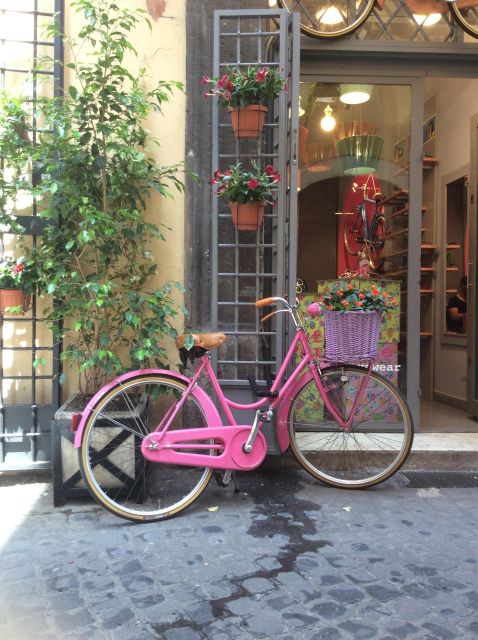
- The Jewish Ghetto, established in 1555, became a cultural hub influencing Roman culinary traditions over centuries.
- Dishes like Jewish-Roma artichokes and Concia di Zucchini reflect the blend of Jewish and Roman culinary practices.
- Seasonal vegetables and slow cooking techniques in Roman cuisine have roots in Jewish culinary traditions.
- The vibrant local market showcases traditional Roman ingredients and fosters community engagement through recipes and cooking tips.
- Architectural landmarks, such as the Sinagoga, highlight the rich history and influence of the Jewish community on Roman culture.
It's also worth checking out some other tours and experiences nearby.
Overview of the Tour
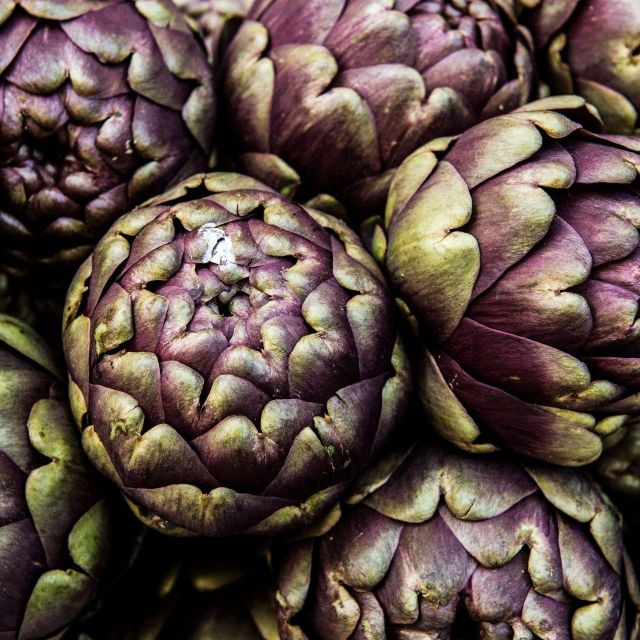
Exploring the Jewish Ghetto while indulging in Roman cuisine, this tour offers a flavorful journey through history and culture in just two hours.
For only $86.04 per person, participants can book their spot without upfront payment and enjoy the flexibility of free cancellation up to 24 hours prior.
The experience caters to various languages including English, French, German, Italian, and Spanish, ensuring everyone feels welcome.
With wheelchair accessibility, it’s inclusive for all.
A private group option is also available, making it perfect for friends or family wanting a personalized adventure.
Guests can expect a knowledgeable guide and a culinary feast that dives deep into the fusion of Jewish and Roman flavors, all while exploring the vibrant Ghetto atmosphere.
Historical Context of the Ghetto
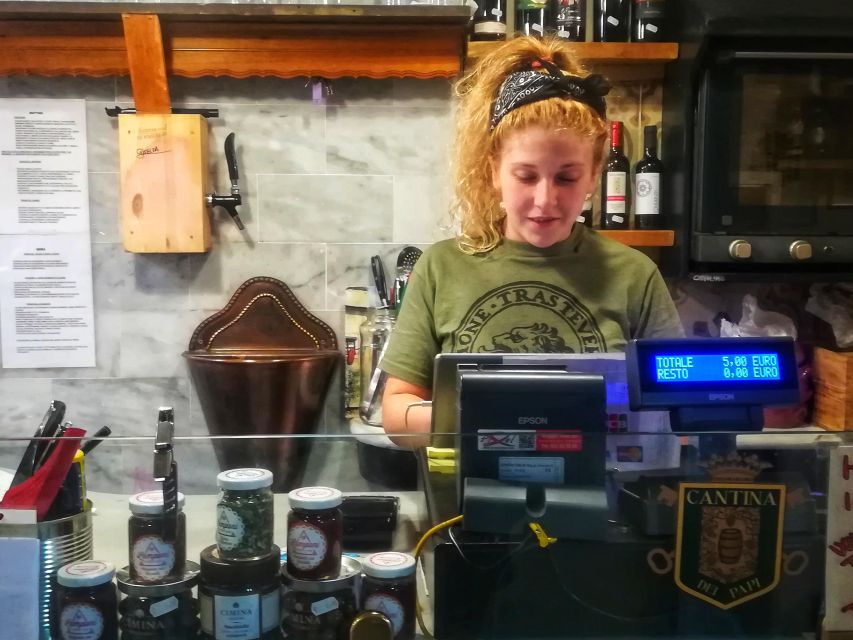
The Jewish Ghetto in Rome is a vibrant testament to resilience and cultural fusion, reflecting centuries of history that shaped both the community and the city’s culinary landscape.
Established in 1555, it was initially meant to segregate the Jewish population, but over time, it became a hub of cultural exchange. The narrow streets and historic buildings are reminders of the struggles and triumphs faced by the community.
As they navigated challenges, the Jews preserved their traditions while embracing Roman influences, creating a unique culinary identity. Architectural gems like the Sinagoga stand tall, showcasing their rich heritage.
This historical context not only enriches the Ghetto’s narrative but also influences the delicious flavors that continue to thrive today.
Influences on Roman Cuisine
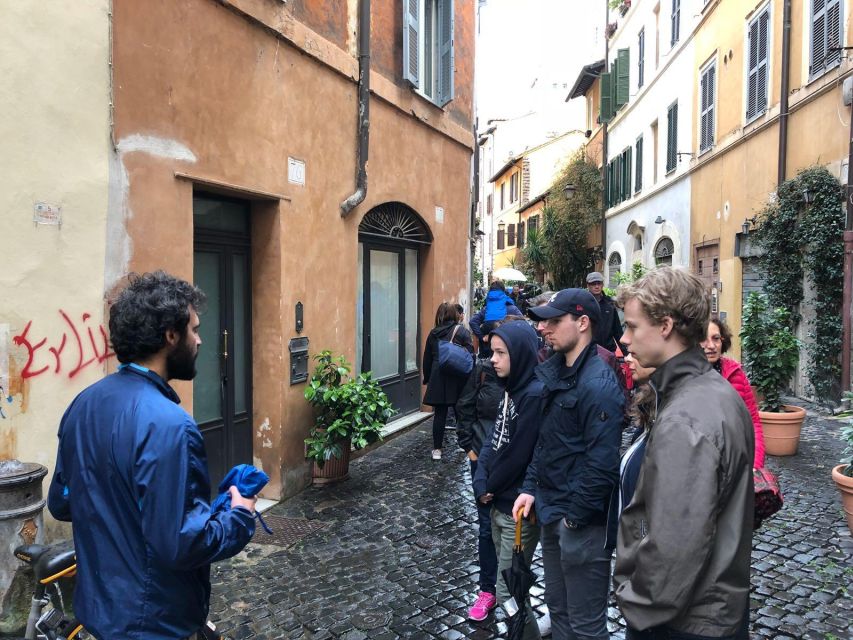
Roman cuisine is a delightful blend of flavors shaped by centuries of cultural interactions, notably influenced by the Jewish community‘s culinary traditions. This fusion has introduced unique ingredients and cooking techniques that define the region’s food today.
For instance, the use of seasonal vegetables and the concept of slow cooking can be traced back to Jewish practices. The famous Jewish-Roma artichokes, crispy and savory, showcase how traditions intertwine.
On top of that, dishes like Concia di Zucchini highlight the creativity that emerges from this cultural exchange. The inclusion of Middle Eastern spices in snacks like Supplì adds another layer of flavor.
Signature Dishes to Try
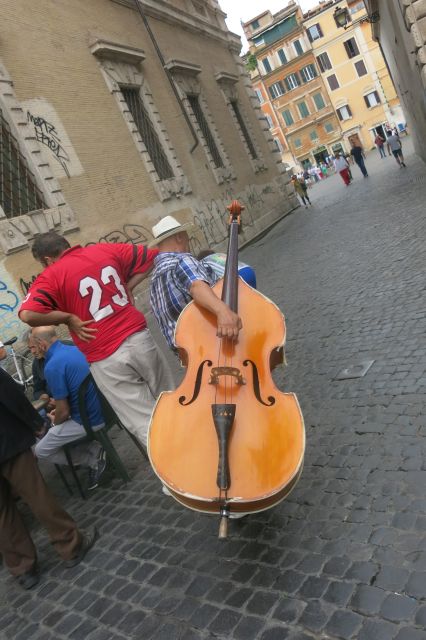
When it comes to must-try dishes in Rome’s Jewish Ghetto, food lovers can’t miss out on the incredible flavors of Concia di Zucchini and the irresistible Jewish-Roma artichokes. These dishes reflect the rich culinary blend of cultures that define Roman cuisine. Here’s a quick guide to some signature dishes:
| Dish | Description | Best Place to Try |
|---|---|---|
| Concia di Zucchini | Marinated zucchini with herbs | Giggettos |
| Jewish-Roma Artichokes | Fried artichokes, crispy and savory | Local eateries |
| Ricotta Pie | Sweet, creamy dessert | Family-run patisserie |
| Pizza Rossa | Classic tomato-topped pizza | Century-old bakery |
Each dish tells a story, making your culinary journey through the Ghetto unforgettable!
Local Market Experience
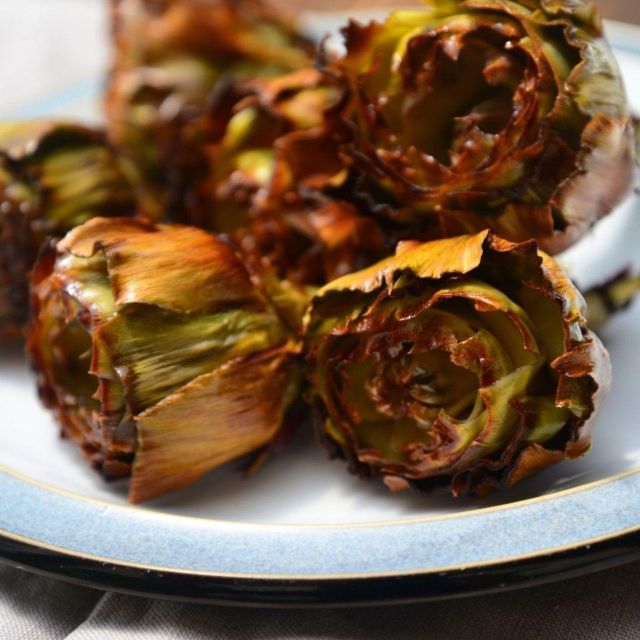
Exploring the local market offers a vibrant glimpse into everyday life, where fresh produce and lively interactions create an authentic Roman experience. Visitors can stroll through bustling stalls filled with colorful fruits, vegetables, and artisanal goods, seeing the sights and sounds.
Here, vendors chat with regulars, sharing recipes and cooking tips, making it feel like a community gathering. The aroma of spices and freshly baked bread fills the air, tempting passersby to sample local delicacies.
This lively atmosphere not only showcases the region’s culinary heritage but also highlights the connection between food and culture. Engaging with local vendors provides insight into traditional Roman ingredients, making the market a must-visit for any food lover.
Cultural Landmarks to Visit
Visitors can’t miss the stunning Sinagoga, a breathtaking symbol of the Jewish community’s rich cultural heritage nestled in the heart of the city. This architectural marvel not only impresses with its grandeur but also tells stories of resilience and tradition.
Just a short walk away, the Portico d’Ottavia invites exploration, showcasing the remnants of Roman life interwoven with Jewish history.
Don’t forget to check out the charming Piazza Mattei, where you can soak in the local vibe and hear tales from the past.
Each landmark offers a unique glimpse into the intricate tapestry of Roman and Jewish cultures, making it easy to see why this area captivates so many visitors.
It’s truly a must-visit for anyone exploring Rome!
Tour Amenities and Inclusions
Tour participants can expect a delightful array of inclusions that enhance their experience, like tasty snacks, refreshing drinks, and the company of a knowledgeable private guide.
Throughout the two-hour journey, guests sip on coffee, tea, or even something a bit stronger while munching on local treats.
They won’t just be wandering; they’ll learn about the rich history of the Jewish community in Rome from an expert who knows the ins and outs of the area.
Plus, the tour kicks off at the iconic Giordano Bruno statue, making it easy to find.
With a focus on comfort and enjoyment, it’s a hassle-free way to dive into the flavors and stories of the Jewish Ghetto and Roman cuisine.
Booking Information and Tips
Booking a spot on this Jewish Ghetto and Roman Cuisine tour is a breeze, especially with options for free cancellation and pay-later flexibility.
For just $86.04 per person, travelers can secure a two-hour culinary adventure without any upfront payment. Plus, they can cancel up to 24 hours in advance for a full refund—perfect for those who like to keep their plans flexible.
The tour caters to multiple languages, making it accessible for everyone. If you’re looking for a more personal experience, a private group option is available.
And don’t worry about accessibility; the tour’s wheelchair-friendly. Just meet at the Giordano Bruno statue, grab your snacks, and be ready to explore the rich tapestry of flavors and history!
Here's a few more nearby tours and experiences we think you'll like.
- Skip the Line: Vatican Museums & Sistine Chapel With St. Peters Basilica Access
- Expert Guided Tour of Colosseum Underground OR Arena and Forum
- The Original Roman Crypts and Catacombs Tour With Transfers
- Tuscany Guided Day Trip From Rome With Lunch & Wine Tasting
- Colosseum Underground and Ancient Rome Small Group – 6 People Max
- Skip-the-Line Vatican, Sistine Chapel & St. Peters | Small Group
Frequently Asked Questions
What Is the Best Time to Take the Tour?
She thinks the best time to take the tour is during the late morning or early afternoon. That way, you can enjoy the sights and savor the culinary delights without feeling rushed or overwhelmed.
Are There Vegetarian or Vegan Options Available?
When it comes to vegetarian or vegan options, the tour offers tasty choices. Guests can enjoy fresh vegetables, delightful snacks, and local specialties, ensuring everyone finds something delicious to savor during their culinary adventure.
How Physically Demanding Is the Tour?
The tour’s pretty easygoing, so it suits most fitness levels. Participants stroll through historic sites and local markets without rushing. They can take their time, enjoying the sights while getting a bit of light exercise.
Is the Tour Suitable for Children?
The tour’s perfect for kids! It’s engaging and offers tasty snacks, plus the guide’s friendly approach keeps everyone entertained. Families will appreciate the wheelchair accessibility, making it an easy outing for all ages.
Can I Bring My Own Snacks or Drinks?
She wonders if she can bring her own snacks or drinks. While it’s best to check with her guide, most tours provide refreshments, so she might want to enjoy the included treats instead.
Not for you? Here's more of our most recent tour reviews happening neaby
- From Hanoi: Sapa – Cat Cat – Fanxipan Peak– Moana 3D2N
- Rome: Colosseum and Roman Forum Small Group Tour (10 People)
- Rome: Pantheon Limited-Time-offer Audioguide
- Rome: 2-In-1 Train & Bus From/To Castel Gandolfo
- Rome Pantheon Audio Guide (No Ticket)
- Rome: Video Tour Guides in ENG at Your Own Pace
- Rome: Pantheon Skip-The-Line Entry Ticket With Audioguide
- Rome: Pantheon Skip-the-Line Entry
- Rome: 2-In-1 Train & Bus Ticket To/From Valmontone Magicland
- Rome: Highlights App Guided Tour With Puzzles
- Rome: Luggage Storage Service Close to the Pantheon
- Rome: Luggage Storage Service Close to the Colosseum
- Luggage Storage Close to Vatican Museums and Sistine Chapel
- Luggage Storage Near Roma Termini Station
- Luggage Storage Rome City Centre
Recap
The Jewish Ghetto Walk isn’t just a stroll through history; it’s a tasty dive into the heart of Roman cuisine.
With every bite of those iconic dishes, you’re savoring centuries of resilience and cultural blending.
Whether you’re wandering through local markets or exploring cultural landmarks, this tour serves up an unforgettable experience.
So, grab your appetite and get ready to taste the rich flavors that tell a story of community and tradition in every dish.
